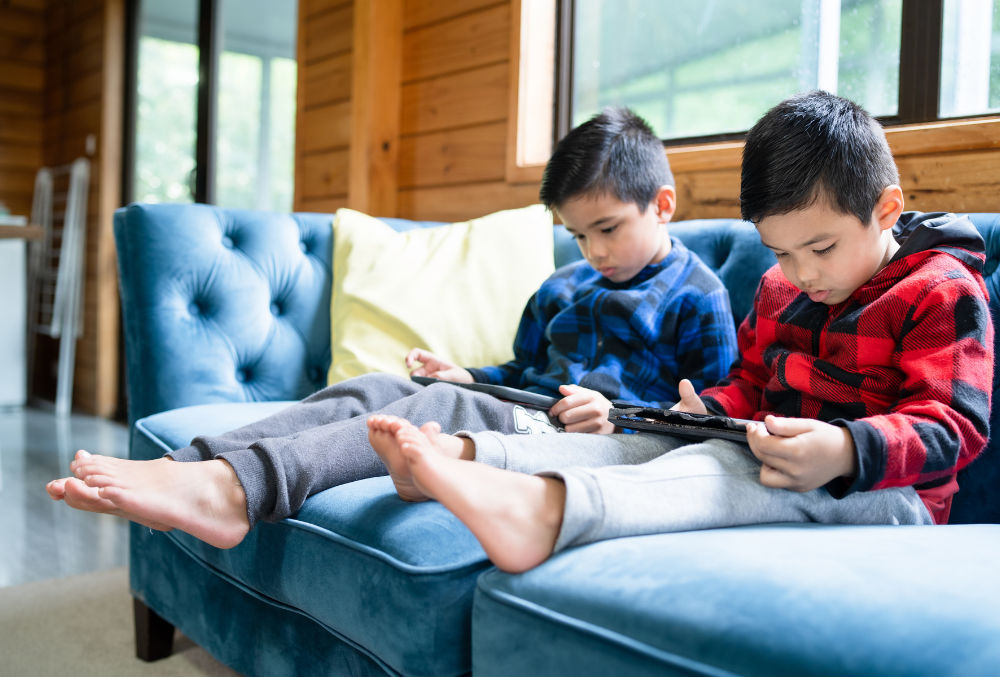
21 May How To Cut Down Children’s Screen Time: Guidelines For Healthy Use Of Digital Devices
It’s hard to believe that only one generation ago, access to a cell phone or a laptop computer was not commonplace in families. Today, of course, that has done a 180-degree turn, and digital devices are part of everyday life for most families, many of which have more than one device for each family member. Even schools and colleges have begun welcoming technology into classrooms, recognizing that, used correctly, digital devices can be very helpful to students in the learning environment.

But what about at home? What kind of access should you allow your children to have? How do you control screen time, without enduring repeated meltdowns and temper tantrums? Can you control it, really, now that we live in a social media and internet-saturated world?
Here are some ideas for helping you control the time your children spend in front of screens, and how you can even get them on board with the idea of spending less time passively using the internet and posting items to their social media accounts
1. Don’t just ask, DO!
If there was ever a moment for you to model the behavior you expect of your children, this is it. If you take your laptop to bed with you, or have your mobile phone beside you at meal times, your children will think your requests of them in this regard are, quite frankly, hypocritical. It’s vital that you use your devices wisely if you expect them to use theirs that way, so be sure to put your phone down (and on silent mode) at meals, and insist they do it as well.
2. Set downtimes when the whole family is “unplugged.”
It could be Sunday afternoon before dinner, or Wednesday and Friday during movie nights. What matters is that you choose a period (or two) during the week when everyone turns off all devices and spends time together. Whether you play touch football in the backyard, go for a long walk or simply spend a couple of hours reading and chatting together, the point is this: technology is not part of the ritual. Communicating and bonding with each other is what matters!
3. Keep control by knowing their passwords.
This might be cause for one of those meltdowns we mentioned, particularly in the case of tech and teenagers. But it must be nonnegotiable. Rather than simply “putting your foot down,” as they used to call dictatorial parenting, explain why this is necessary. Tell them that you don’t intend to invade their privacy, but it is your job, as the parent, to know what they are doing online, and whom they are chatting with.
You need to know immediately, for example, if your child becomes a target of cyber bullying, because they may be reluctant to come to you about it. Perusing their computer use and search history allows you to stay up-to-date on their online activities, and you’ll know immediately if someone is approaching them in an unhealthy or suspicious way. Then, you can take action.
4. Depending on their age, keep their computer use limited to common areas.
We know many experts who believe that children younger than 12 should not be allowed on a computer by themselves. You need not hover when they are using it; we aren’t suggesting that. But unless they are doing something they want to hide, they should be okay with using the laptop at, for example, the kitchen table when you or your nanny are preparing dinner.
5. No screens for at least one hour prior to bedtime.
All the latest research supports this, because being on screens before bed interferes with sleep quality. Don’t take your phone into your bedroom either, or your laptop, and your children will be more willing to part with theirs. Remember: set a good example!
6. Trade screen time for an activity.
Researchers have noted that obesity is a rising problem with children, in part because they are too often idle, playing video games or using their social media accounts. Get them outside into the “real world” where they can run, jump, play and generally blow off steam. Or get them into sports, dance, or another physical activity they enjoy, so not all their “down time” is spent on a phone or computer.
Controlling children’s screen time is an ongoing challenge for parents and nannies. Scientists are continuing to research what is an acceptable amount, at different ages, but most agree on a few basics: know what your children are using their phones and laptops for. Know who is reaching out to them online. Set a good example by being a moderate consumer of technology yourself, and use your devices responsibly. Children need what they have always needed: love, attention, support and their parents’ engagement with them. Digital technology hasn’t changed that. Used wisely, it can be a terrific adjunct to learning and socialization. Used poorly, and your child can become addicted. Be aware, be firm, but most of all, be involved in their digital lives.